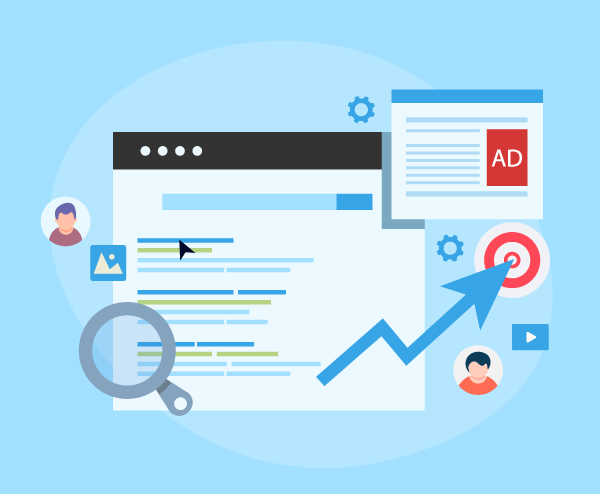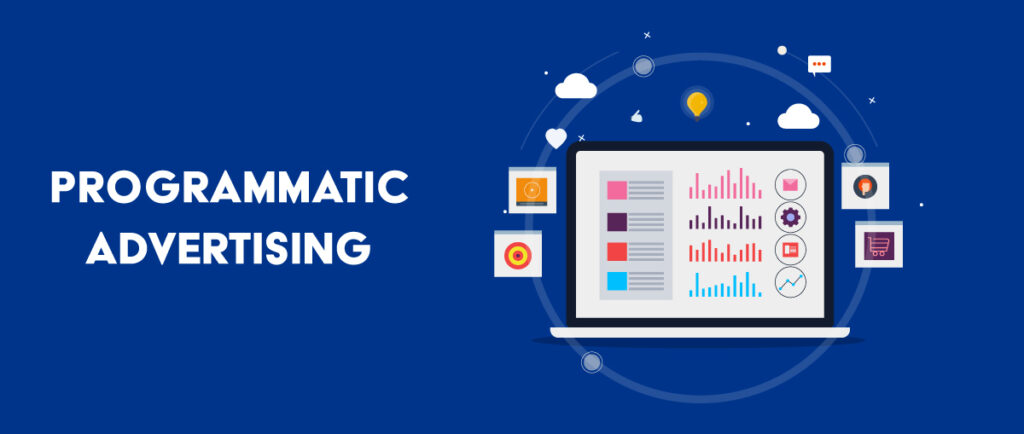Programmatic advertising has become a key component of many business’s marketing strategies over the past several years. With the ability to target audiences and maximize the impact through a variety of platforms – like traditional banner ads, video, or audio – programmatic ad spend is set to surpass $550 billion in 2023, according to Statista.
This is reflected in our services, as well; Meister Media is set to have more clients participate in programmatic advertising services this year than at any point in the company’s history. Even with those numbers, some companies are still unsure about how programmatic advertising works or are not utilizing it to its full benefit.
In its most general sense, programmatic advertising, is the automated process of placing digital ads across the internet and allows businesses to target their marketing efforts to specific audiences. Because programmatic advertising uses the entire internet to help businesses reach their preferred customers with available inventory, you can generally expect to receive more impressions and overall visibility for your message rather than just advertising on one website.
Meister Media offers two programmatic-based products, Audience Extension and Retargeting, which act similarly but have slight nuances between the two. Here, we’ll provide a brief introduction and give you some best practices for brand awareness or lead generation campaigns.
 What is Audience Extension?
What is Audience Extension?
Audience Extension helps businesses reach new potential customers by leveraging first-party data to market products and services to a preferred audience. In other words, an advertiser can come to a Meister Media sales rep and define who they want to reach by business type, crop, location, or services. From there, we will build an audience and then send that advertiser’s ad through our platforms only to the companies that fit the criteria.
For example, if a seed supplier has a new video series of their products that’s specifically for vegetable growers, we can build a targeted list of only vegetable growers from our audience file and ensure that the supplier’s videos only reach that targeted list.
The Takeaway: While using Audience Extension is an effective way to build awareness of your products and services among targeted prospects, businesses with interest in acquiring more first-party data for their own internal marketing efforts would benefit most greatly from this service. Meister Media updates audience data daily, ensuring that the data you receive for your next lead generation campaign is the most timely and accurate. If you have content that would require someone to register to view it, such as a case study, special report, whitepaper, etc., make sure that you are considering Audience Extension in your next campaign.
 What is Retargeting?
What is Retargeting?
Retargeting is a strategy that involves the use of a tracking pixel on a user’s browser and then serving your ads to that user throughout their internet browsing. You’ve most likely seen this during your personal browsing when you visit a website and an ad from that company shows up in your social media feed or on other websites.
It applies to the B2B side in the same way. For example, a retailer can visit CropLife.com and see an ad from an equipment manufacturer, something that they would expect to see while visiting our website. They could then use their phone or desktop to visit other websites later that day and be served ads from that same equipment manufacturer that they saw on CropLife.com.
The Takeaway: Retargeting can help you keep your brand and/or products in front of your ideal customer prospects more so than just advertising on one website alone.
Tips for Getting the Most Out of Programmatic Advertising
Most businesses that use Meister Media’s retargeting services will tend to also advertise on an MMW website, which is known as endemic advertising. This is for (at least) two reasons: You are catching the audience on a platform where they expect to see you (i.e., an equipment manufacturer on CropLife.com), and those that utilize both endemic and retargeting tend to see click engagement increase anywhere between 20%-40% over either method individually. (For more tips and examples of the best uses of banner ad creative, check out our recent article on the topic.)
Many businesses tend to deploy the same creative assets for the endemic advertising as for their programmatic efforts. While there is certainly nothing wrong with consistency and making it easy for the visitor to recall the brand, and sometimes creative budgets and time can constrict the use of multiple sets of creative, conversions remain what most marketers are after.
Conversions can be as simple as leading a user back to your website or getting them to register to download an asset. Taking a page from the eCommerce company that follows you around to get you to take an action on their website, marketers should deploy that same strategy in B2B by differentiating the creative in their retargeting efforts from their endemic advertising efforts. In other words, use endemic advertising to build awareness and then use the retargeting efforts as your conversion strategy since they are more likely to take action after becoming aware of your business or product.
The Takeaway: Both Audience Extension and Retargeting are effective strategies that can significantly amplify the impact of digital marketing campaigns. Each approach, with its distinct focus and methodology, serves specific goals within a broader marketing strategy. Marketers should carefully consider their objectives and target audience when choosing between these strategies, ultimately tailoring their approach to achieve their best results in today’s dynamic digital landscape.
Of course, each company’s goals and situations are different. Want to talk through what will work best for you? Our experts are happy to talk through your questions. Give us a call today, and let’s build your program.

